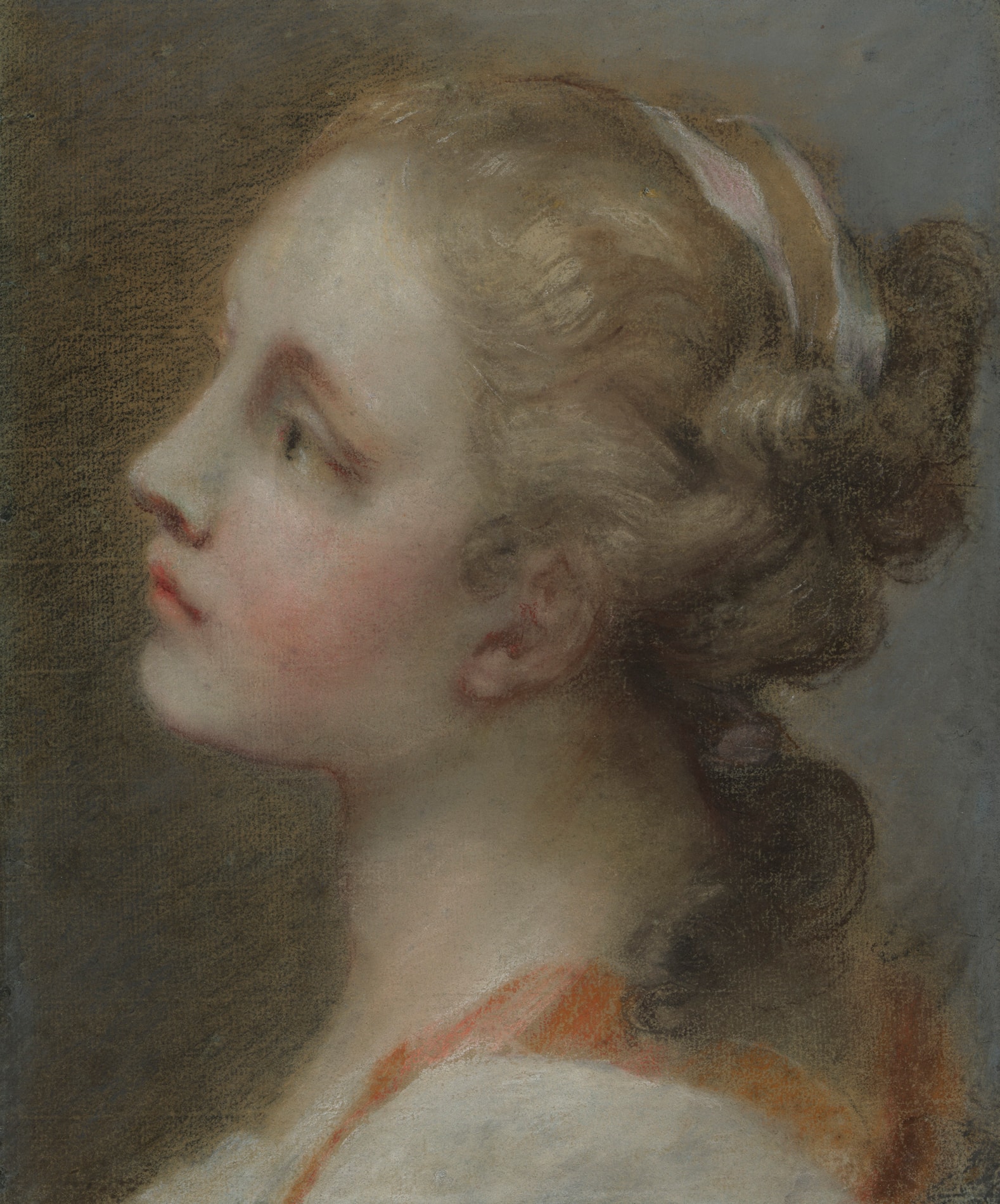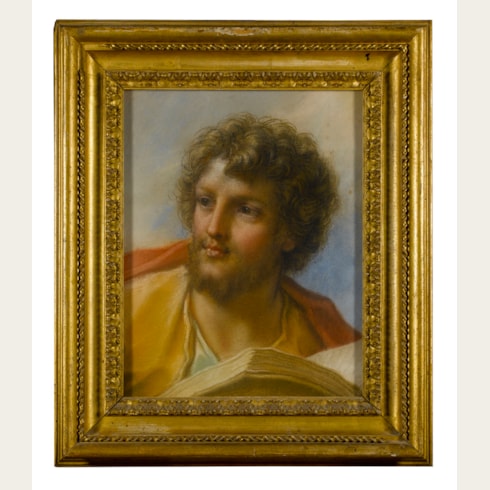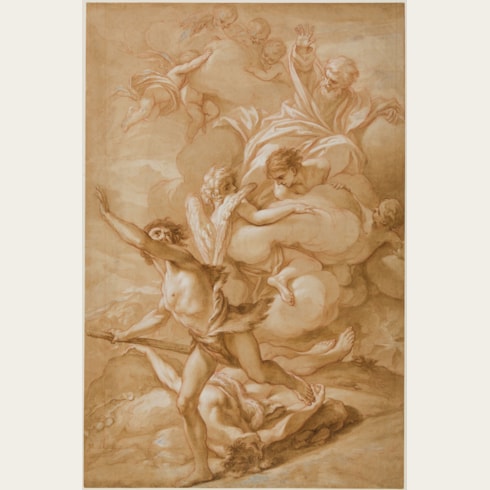Benedetto LUTI
(Florence 1666 - Rome 1724)
The Head of a Young Woman
Sold
Pastel on blue paper.
297 x 242 mm. (11 5/8 x 9 1/2 in.)
297 x 242 mm. (11 5/8 x 9 1/2 in.)
Benedetto Luti was a pupil of Anton Domenico Gabbiani in Florence in the 1680s, and at the end of the decade was sent to Rome to complete his training at the Medici academy there. Admitted to the Accademia di San Luca in 1695, Luti worked in Rome for the remainder of his successful career, becoming one of the most important and influential artists in the city. He earned commissions from Popes Innocent XII and Clement XI and several cardinals, as well as members of the Roman nobility and the city’s leading families, and painted altarpieces and decorations for churches and palaces in Rome and elsewhere. Luti continued to maintain close contacts with Florence, however, and enjoyed the particular patronage of Cosimo III, Grand Duke of Tuscany; he also sold paintings to prominent collectors in France, England and Germany, notably Lothar Franz von Schönborn, Archbishop-Elector of Mainz. The 17th century biographer Lione Pascoli wrote of Luti that ‘he achieved a tender and delicate manner, of lovely and soft colour with perfect design, and with such harmonious compositions so well attuned to his exquisite taste, that no one has been able to imitate it.’
Luti was not a prolific painter, however, and less than eighty paintings by the artist are known today. A gifted teacher with a large studio, he counted among his pupils Placido Costanzi, Giovanni Paolo Pannini and the brothers Jean-Baptiste and Carle van Loo. He held private classes in life drawing and took a leading role in the affairs of the Accademia di San Luca, of which he was elected principe in 1720. Recognized as a fine connoisseur himself, Luti was also active as an art dealer, agent and collector in Rome, eventually assembling a large collection of drawings by earlier artists, numbering almost 15,000 sheets.
Benedetto Luti’s significance as a painter and draughtsman was aptly summarized by the pioneering modern scholar of 18th century Italian art, Anthony Clark: ‘Luti was a lovely and careful artist; and he is rather a rare one. His originality was appreciated, but not without reservations and misunderstanding. Highly intelligent, solitary, melancholy, and sickly, Luti was a great collector of drawings and prints, and not overfond of the act of painting – at which he was more brilliant and easy than any Roman colleague of the day. His honors and fame in Europe were considerable…His perfectly executed paintings, his drawings of exquisite quality…are one of the finest and most formative achievements of the century.’ As a draughtsman, Luti was particularly noted by his contemporaries for his work in pastel and coloured chalks, and beginning in the early years of the 18th century he produced a number of highly finished and coloured drawings of heads that were much sought-after by collectors and connoisseurs.
Luti was not a prolific painter, however, and less than eighty paintings by the artist are known today. A gifted teacher with a large studio, he counted among his pupils Placido Costanzi, Giovanni Paolo Pannini and the brothers Jean-Baptiste and Carle van Loo. He held private classes in life drawing and took a leading role in the affairs of the Accademia di San Luca, of which he was elected principe in 1720. Recognized as a fine connoisseur himself, Luti was also active as an art dealer, agent and collector in Rome, eventually assembling a large collection of drawings by earlier artists, numbering almost 15,000 sheets.
Benedetto Luti’s significance as a painter and draughtsman was aptly summarized by the pioneering modern scholar of 18th century Italian art, Anthony Clark: ‘Luti was a lovely and careful artist; and he is rather a rare one. His originality was appreciated, but not without reservations and misunderstanding. Highly intelligent, solitary, melancholy, and sickly, Luti was a great collector of drawings and prints, and not overfond of the act of painting – at which he was more brilliant and easy than any Roman colleague of the day. His honors and fame in Europe were considerable…His perfectly executed paintings, his drawings of exquisite quality…are one of the finest and most formative achievements of the century.’ As a draughtsman, Luti was particularly noted by his contemporaries for his work in pastel and coloured chalks, and beginning in the early years of the 18th century he produced a number of highly finished and coloured drawings of heads that were much sought-after by collectors and connoisseurs.
Provenance
Louis-Antoine and Véronique Prat, Paris (Lugt 3617), their collector’s mark formerly stamped at the lower left of the sheet
Their sale, Paris, Hôtel Drouot, 5 December 1984, lot 33
Galerie de Bayser, Paris, in 1988
Kate de Rothschild, London, in 1988
Private collection, London.
Literature
Neil Jeffares, ‘Benedetto Luti’, Dictionary of pastellists before 1800 [online edition], no.J505.237 (not illustrated).






